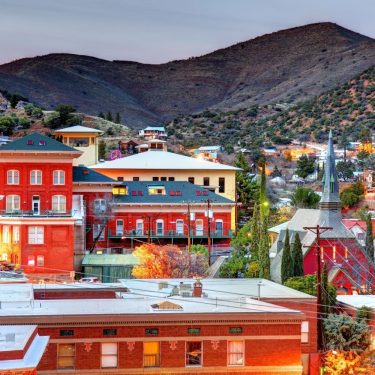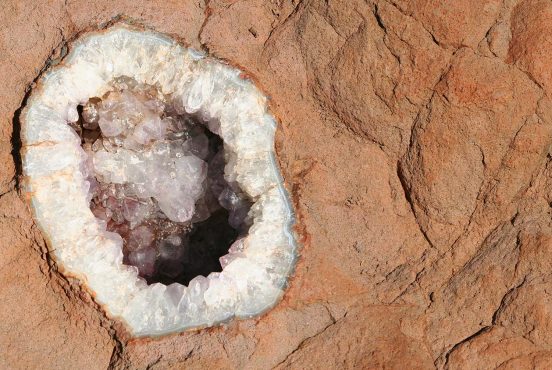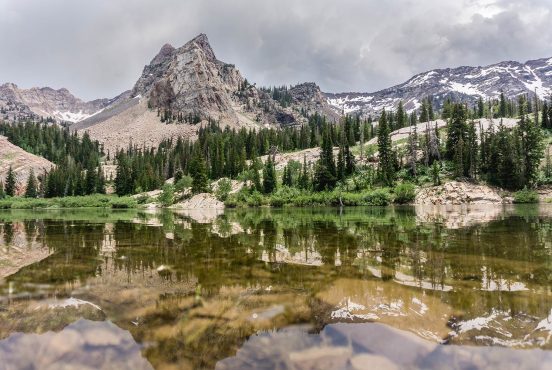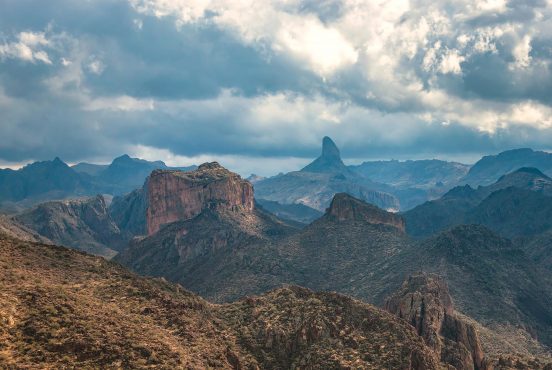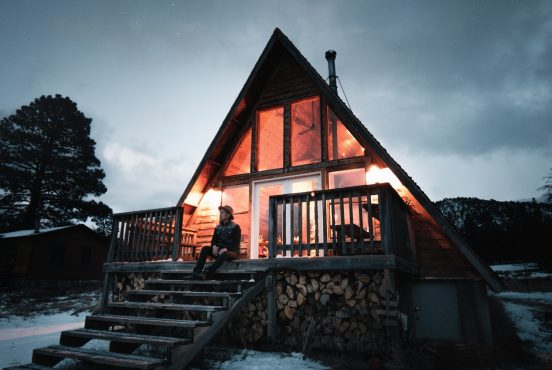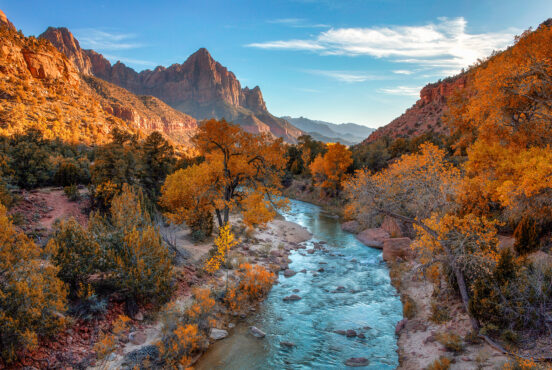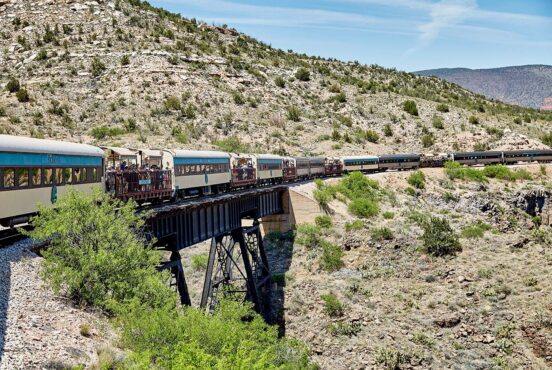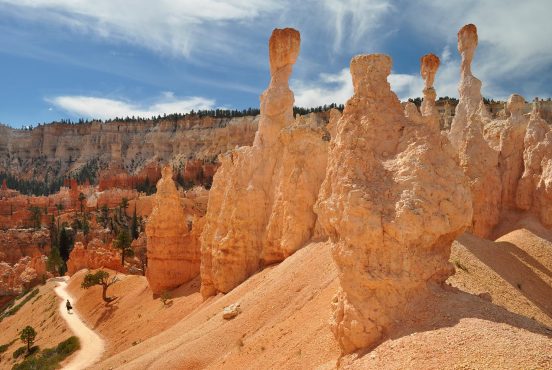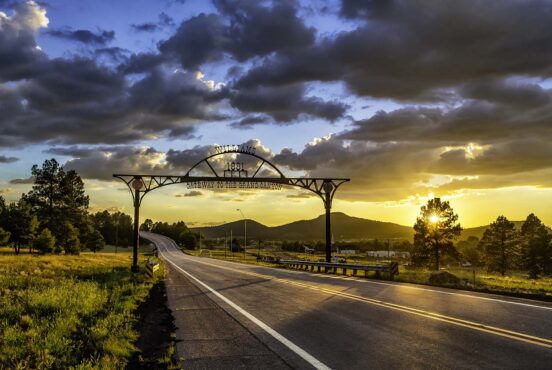Arizona is home to hundreds of ghost towns, with estimates suggesting as many as 300 throughout the state — depending on how you define “ghost.”
Most of these wild west towns are former mining boom towns that were abandoned when the mines shut down, though others were supply points for mining operations nearby.
Some traces of civilization remain in some ghost towns, while others are populated only by buildings in various states of disrepair. A few support full-time residents, but significantly fewer than what they had at their peak.
The one thing that ties them all together is that they provide a glimpse of the past, a fascinating look at history without actually going back in time. Here are eight amazing Arizona ghost towns to add to your road trip plans.
Related Read: 6 Spookiest Ghost Towns in Utah for Exploring the Old West
1. Ruby
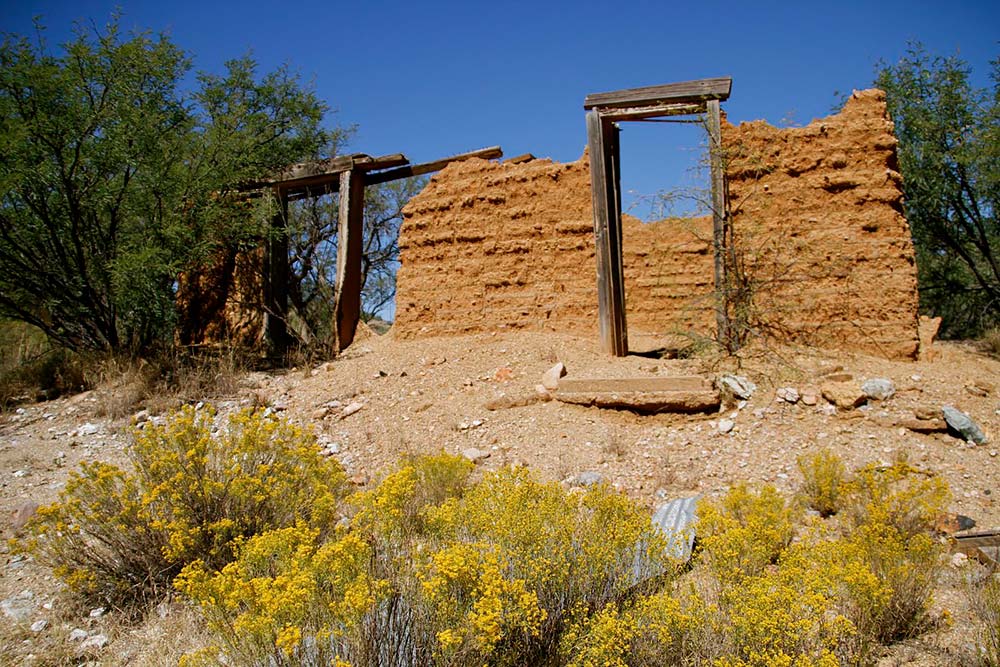
Nearest town: Tucson (1.5 hours)
Very close to Tucson (as far as ghost towns ago, anyway), Ruby provides a look at what life in the Wild West was like more than a century ago. Today, it’s just north of the U.S-Mexico border, which made it a lively spot during the time of newly drawn territories and western land grabs.
While the lack of rain and rough terrain made it a poor choice for agricultural development, the high mineral content drew many prospectors to pursue their dreams of wealth. Miners discovered rich veins of gold and silver in 1854, but mining was limited as the area was Apache territory.
However, by the 1860s and 70s, new prospectors claimed additional sites, eventually forming a settlement called “Montana Camp” just below Montana Peak. Soon, veins of copper, zinc, and lead were uncovered, and by the turn of the century, Ruby was southwestern Arizona’s largest mining camp.
The Ruby Mercantile (of the infamous Ruby murders) first opened in the 1880s and by 1891, the Montana Mine proved to be a bonanza. It produced 80 ounces of silver per ton – for the non-miners out there, that’s an awful lot. It brought a flood of prospectors. A post office opened in 1910 and operated until the mine closed in 1940.
Only a year later, Ruby was completely deserted. Today, there are still 25 buildings standing from its rough and rugged lawless days, with a caretaker there to maintain them in their original state. The mining company left behind their buildings and equipment, while the miners and their families left the mercantile, a three-room school, and playground. Those who want to stick around awhile will find the La Siesta Campgrounds about 16 miles north.
Related Read: 9 Unique Places to Stay in Arizona for an Unforgettable Vacation
2. Jerome
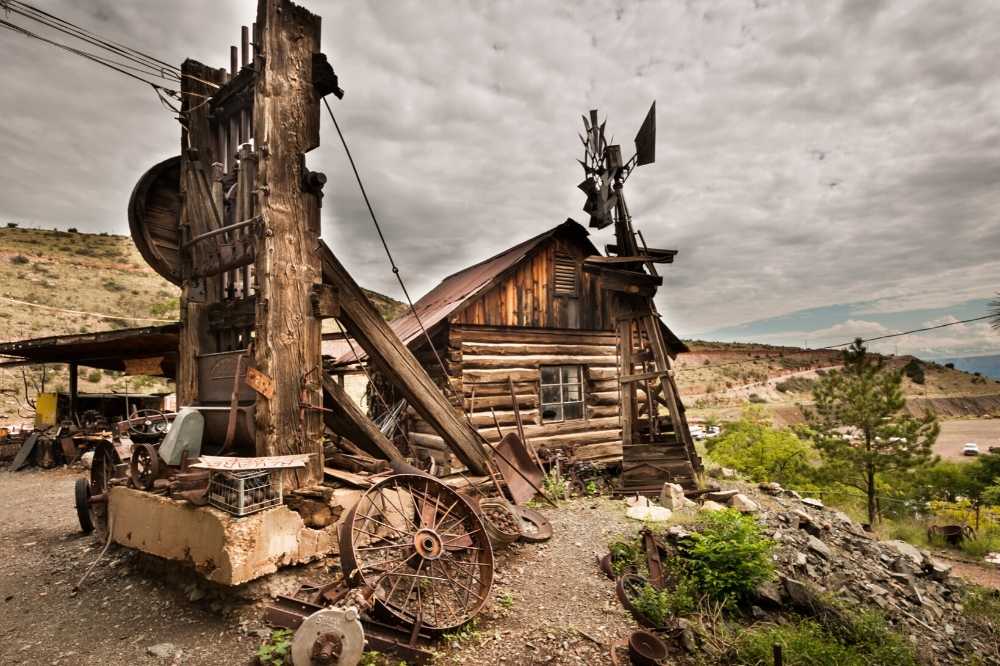
Nearest town: Prescott (50 mins)
Jerome’s heyday was a bit later than Ruby’s, but not by much. The mines near Jerome were rich in copper, rather than silver, and nearly 10,000 people lived here. However, since nearly all of them worked in the copper mines, the town went belly-up when the mines dwindled.
In the 1950s, when the last mine closed, almost everyone left. The fewer than 100 people who decided to promote it as a historic ghost town, marketed as “the wickedest town in the West.” Was it? Go find out for yourself.
Jerome is famous for its hotel hauntings, with numerous bizarre happenings at the Ghost City Inn, Mile High Grill & Inn (a former brothel), the Conner Hotel, and the Jerome Grand Hotel, which is a former frontier hospital said to be haunted by dead miners.
There are plenty of other places to explore around town even if you’re not into the paranormal, including the Mine Museum and the Jerome State Historic Park’s 1916 Douglas Mansion. Downtown Jerome, in the area where (a few) people live, there’s a small strip with some galleries, restaurants and tasting rooms — and the “Haunted Hamburger” restaurant, of course.
Related Read: The 7 Best Caves in Arizona for Subterranean Exploration
3. Goldfield
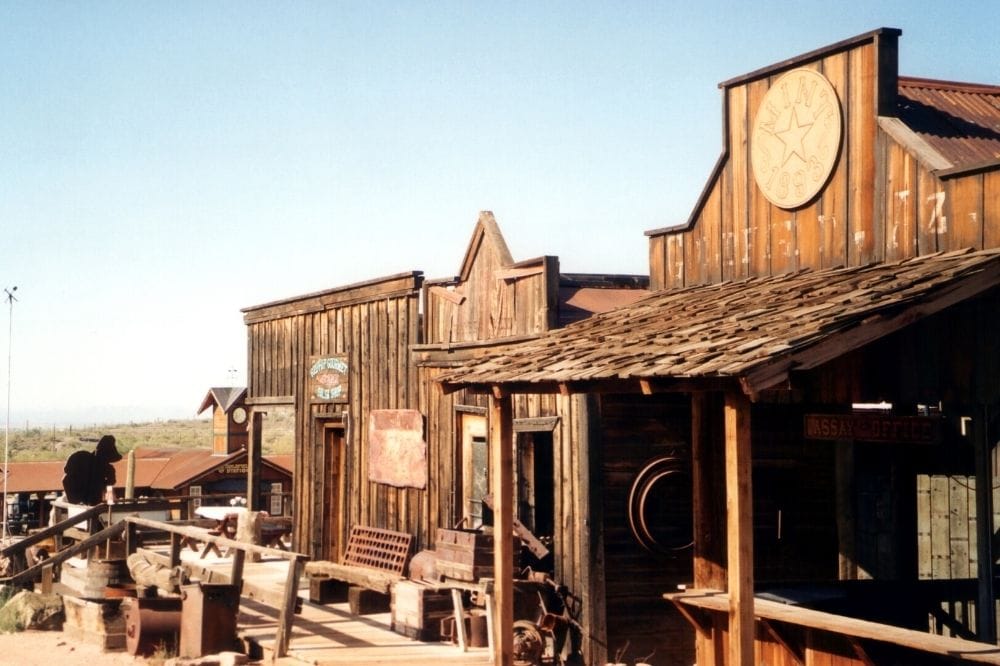
Nearest town: Phoenix (45 minutes)
Goldfield is a former gold mining town turned turned into a tourist attraction about 40 miles east of Phoenix. While it may be a bit more along the lines of “slightly cheesy tourist destination” than some of the towns on this list, it’s worth a visit, and families with kids will especially appreciate the educational entertainment.
Just before the turn of the 20th century, Goldfield was home to a general store, boarding, house, multiple saloons, a brewery, meat market, blacksmith shop, and a school house. It seemed destined to become a large town until the nearby mines dried up. There were a number of attempts to reopen the mines in the 1920s, but in 1926, Goldfield died its second death with the closure of the post office.
Interestingly, some of the town is actually privately owned by ghost town/treasure hunting enthusiast Robert F. “Bob” Schoose, who bought the site of the old mill and decided to rebuild the town. He first constructed a mining tunnel (with a snack bar, of course), followed by a general store, photo shop, saloon, and museum.
Today, visitors to Goldfield can tour a mine, pan for gold, ride the only narrow-gauge train in the state, watch Old West gun fights, and explore the various shops and buildings. Sure, it’s one of the more developed Arizona ghost towns, but it’s also tons of fun.
Related Read: 20 Superstition Mountains Hiking Trails You Can’t Miss
4. Gleeson
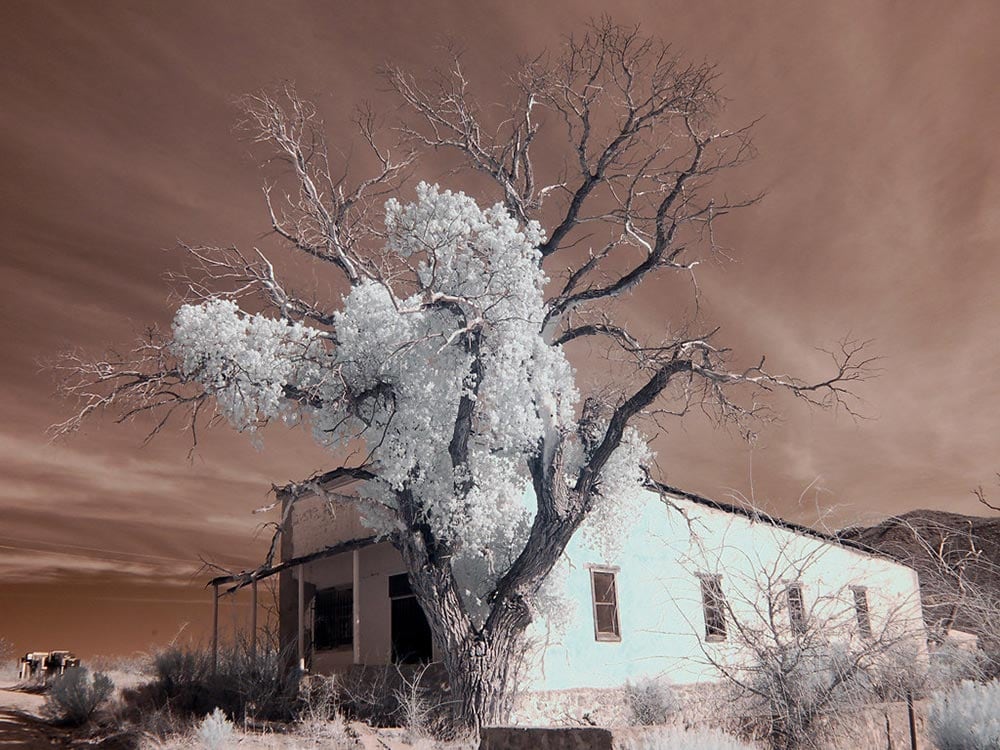
Nearest town: Tombstone, if you count that as a town (30 mins)
If you’re planning a visit to Tombstone to recite your favorite Tombstone quotes, don’t miss Gleeson as it’s just 16 miles west. While few people seem to be aware of it, this former town was once a temporary containment area for prisoners on their way to Tombstone; Gleeson’s jail was built in 1910.
The town thrived between 1900 and 1930, first attracting treasure hunters looking for turquoise. Mines opened with the discovery of large deposits of copper in the 1910s, though the town began to die when the demand for copper diminished just a decade later. The town started to slowly die and was totally abandoned by 1939.
Today, you can still see most of the jail, which is now a museum. Nearby is a tree where they used to handcuff prisoners before the jail was built. There’s also an old general store, hospital, school, and cemetery. Bring water and have plenty of gas as there are no amenities on site.
Related read: Is Tombstone a True Story? Here’s What’s Accurate (and Not)
5. Agua Caliente
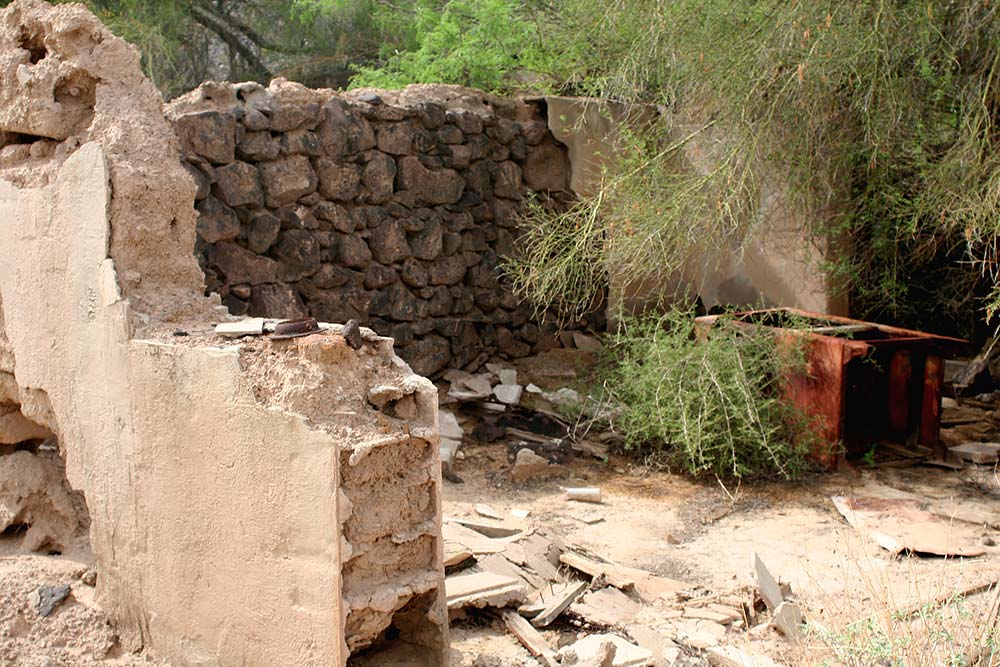
Nearest town: Yuma (1.5 hours)
North of the Gila River near the town of Hyder is Agua Caliente, which translates to “hot water.” Unlike many Arizona ghost towns, Agua Caliente was built around a natural hot spring (and eventually a stagecoach line), rather than a mine. Native Americans used the soothing spring before it was “discovered” by 19th-century travelers. Eventually it became known as a relaxing stop for those traveling the Butterfield Overland Mail Route.
Agua Caliente’s first owner was King S. Woolsey, who ran Agua Caliente Ranch. He used the springs for limited agricultural purposes and raising livestock like goats and cattle. But when travelers started coming through the area he built a 22-room resort (finished in 1897), complete with a spring-fed swimming pool.
While many came to the resort to enjoy the healing properties of the spring, farmers in the area overtaxed the springs and they eventually dried up. Travelers today can still see the ruins of the hotel along with other stone buildings and the pioneer cemetery.
Related Read: 11 Best Places to Go Camping Near Water in Arizona
6. Swansea
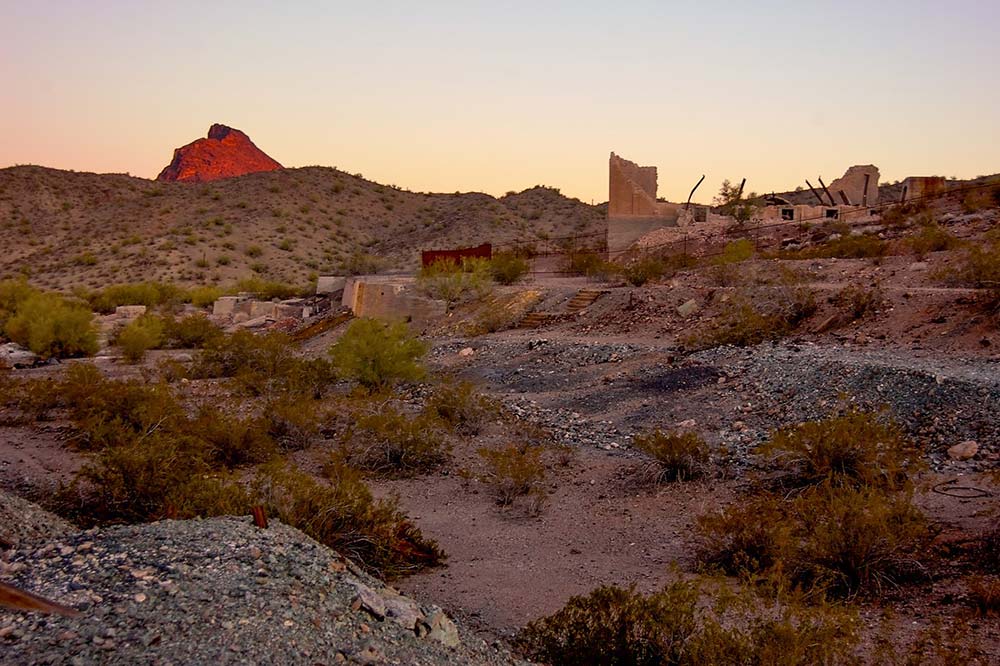
Nearest town: Lake Havasu City (2 hours)
Swansea is a well-preserved ghost town in western Arizona, about 32 miles east of Parker near the Bill Williams River. The town was jumping from the discovery of silver in 1862 to the decline of the mines in 1886.
In 1904, a mining company purchased these “worthless” claims with big plans to build a town and mine for copper. In their search for investors, they brought George Mitchell, a Welshman from Swansea, Wales, to the site, who was impressed and bought into the project.
The town was doing well by 1909 — hey, it had a post office! — and Mitchell’s mines processed some 50 tons of copper a day. It was never a booming town, but it did have an electric light company, a lumber company, a car dealer, an insurance agent, saloons, and restaurants, with a population of around 750 at its peak. But the quick success ultimately turned to quick failure.
The cost of processing copper was higher than what they could sell it for, leading to bankruptcy in 1911. While Swansea remained an active town for another dozen years or so, the post office closed in June 1924 and most residents left soon after. There are dozens of buildings and structures that still remain, along with two cemeteries, making it one of the most interesting ghost towns in the state. The roads to get here are rough, dry, and remote. Bring everything you could need with you as it’s definitely one of the most remote Arizona ghost towns.
Related Read: 9 of the Best Airbnbs in Lake Havasu City, Arizona
7. Fairbank
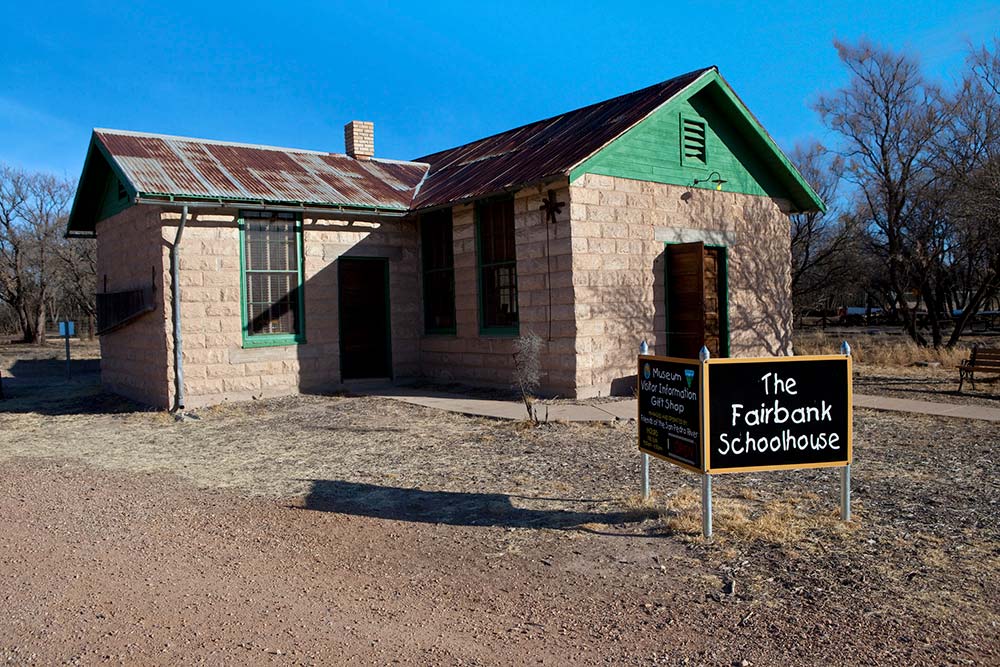
Nearest town: Benson (30 minutes)
It might be hard to imagine when you see it now, but Fairbank (not to be confused with Fairbanks, AK) played a key role in the growth of Arizona’s southeast region. It was established in 1881 and grew when the railroad came through soon after.
The town, located next to the San Pedro River between Tombstone and Whetsone, was primarily a stopping point during the transport of supplies and silver to places like booming Tombstone and the area’s mill towns. But when the silver dried out, it didn’t take long for Fairbank to fade away along with it.
Visitors today can step inside old schoolhouse that was active until the 1930s and view remains of a railroad bridge, a hotel, and various adobe structures that were once homes and stores.
Related Read: 9 Rad Camping Spots Near Saguaro National Park, Arizona
8. Two Guns
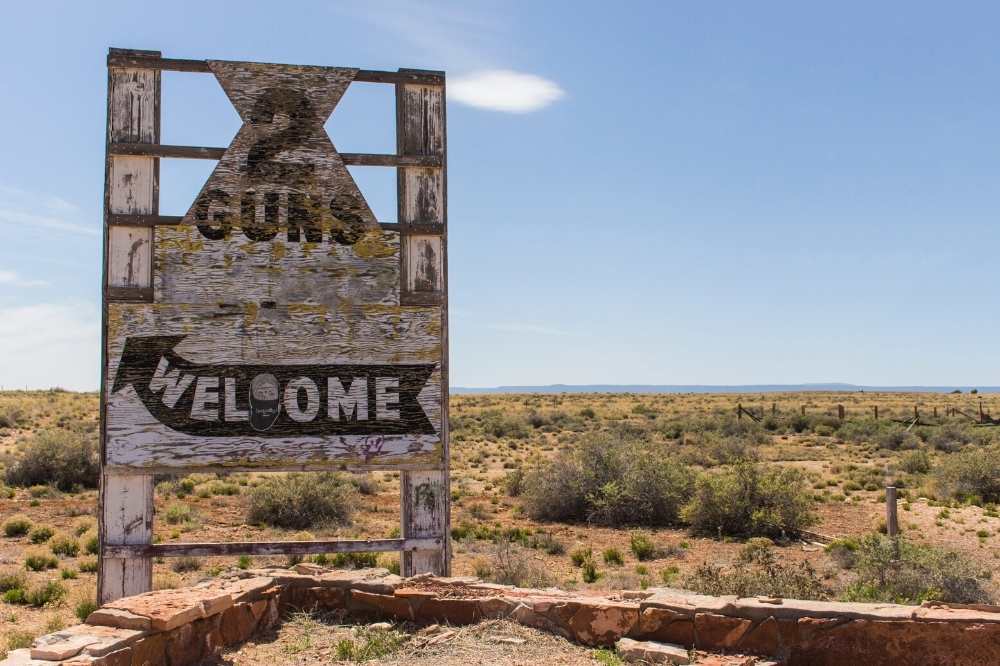
Nearest town: Benson (30 minutes)
Two Guns is one of Arizona’s easiest ghost towns to reach, perched on the high plains 30 miles east of Flagstaff along historic Route 66. Artifacts show Native Americans populated the area as far back as the 11th century, though white settlers didn’t arrive until the mid-1800s as the town was one of the easiest places to cross infamous Canyon Diablo.
In 1878, Canyon Diablo was the site of a mass murder of Apaches by their Navajo enemies; the site where the Apache hid out is called the “death cave.” Billy the Kid and his gang later hid here in the ruins of a stone house on the canyon’s west rim.
The town was established as a work camp for crews building the railroad over Canyon Diablo. Populated only by lonely men fleeing the east coast, it quickly grew into a lawless, wild place for outlaws, gamblers, and drifters. In 1889, train robbers stole gold coins, new silver dollars, jewelry, watches, diamonds, and $100,000 in cash, most of which were never recovered. One of the thieves claimed the stash was burned near Two Guns in the canyon rim, but treasure hunters have yet to find it.
An official settlement was established in the 1920s, offering tourists the chance to tour the “death cave” (and newly built gift shop) or stop in the small restaurant and use the gasoline pumps. There was even a zoo with animals like lynx, cougars, mountain lions, and gila monsters. The cave was cleaned out, opened for tours, and Apache skulls were sold as souvenirs (cringe.)
For two decades, Two Guns was a popular tourist stop on Route 66. Today, all that remains are the ruins of the roadside zoo scattered about the landscape, shells of the old gas stations, restaurants, trading post, an arch bridge, and an abandoned KOA campground, all overgrown with weeds and being slowly swallowed into obscurity by nature.
As if the death cave and violent railroad town weren’t eerie enough, the man who opened the zoo even murdered his landlord in a property dispute before being mauled by one of his lions. In 1971, a fire destroyed most of what was left. Creepy.
Related Read: The Top 9 Places to Get Spooked on Halloween in the U.S.
Explore More of Arizona
Sign up for Weekend Wanderer to join thousands of readers getting epic travel ideas every week.

